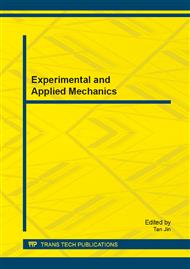p.329
p.335
p.343
p.350
p.356
p.361
p.366
p.374
p.381
Research on Virtual Experiment Teaching Oriented to Innovative Ability Cultivation in Mechanical Engineering Curriculums
Abstract:
In view of the existing problems in traditional experiment teaching of mechanical engineering curriculums of high school, the method of virtual experiment teaching is proposed in this paper, which aims at developing students creative thinking and enhancing their innovation ability. According to the two aspects of the teaching method and its realization, the various experiments are designed based on virtual design and computer simulation. The results show the proposed virtual experiment teaching method improves students' creative thinking, stimulates students' enthusiasm and creativity, enhances students' overall understanding on mechanical system, and has received good learning effect.
Info:
Periodical:
Pages:
361-365
Citation:
Online since:
February 2014
Authors:
Price:
Сopyright:
© 2014 Trans Tech Publications Ltd. All Rights Reserved
Share:
Citation:


